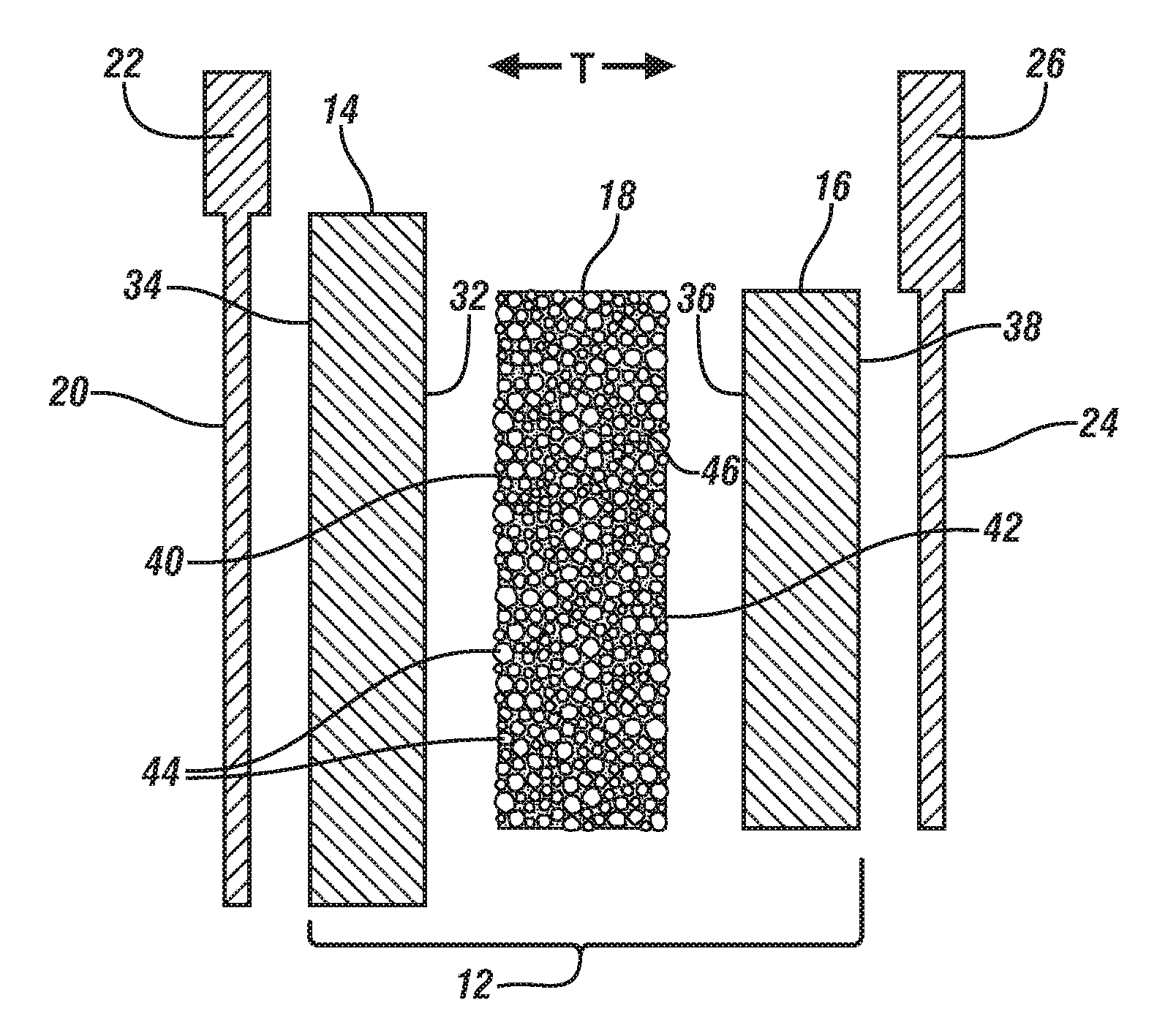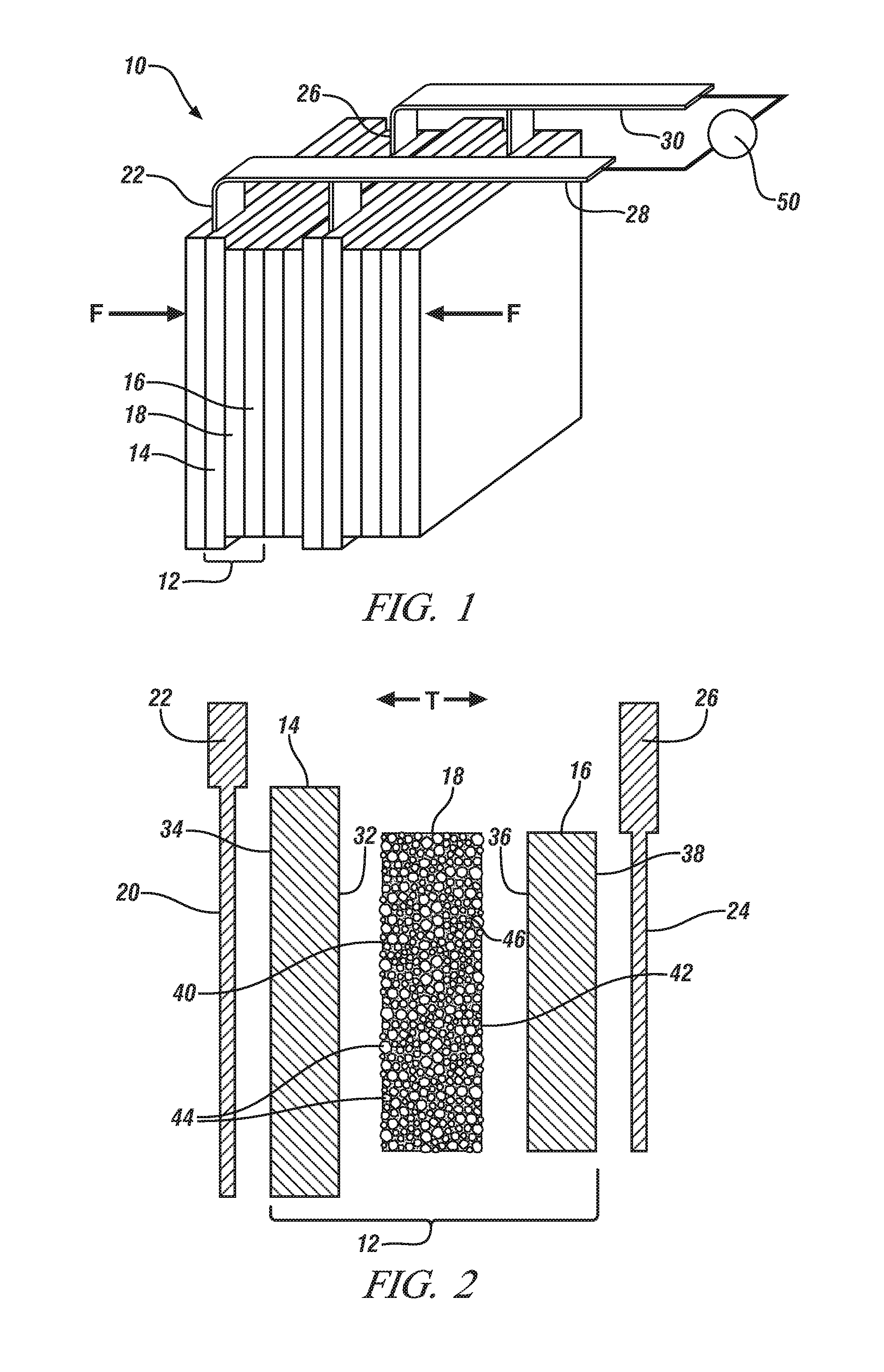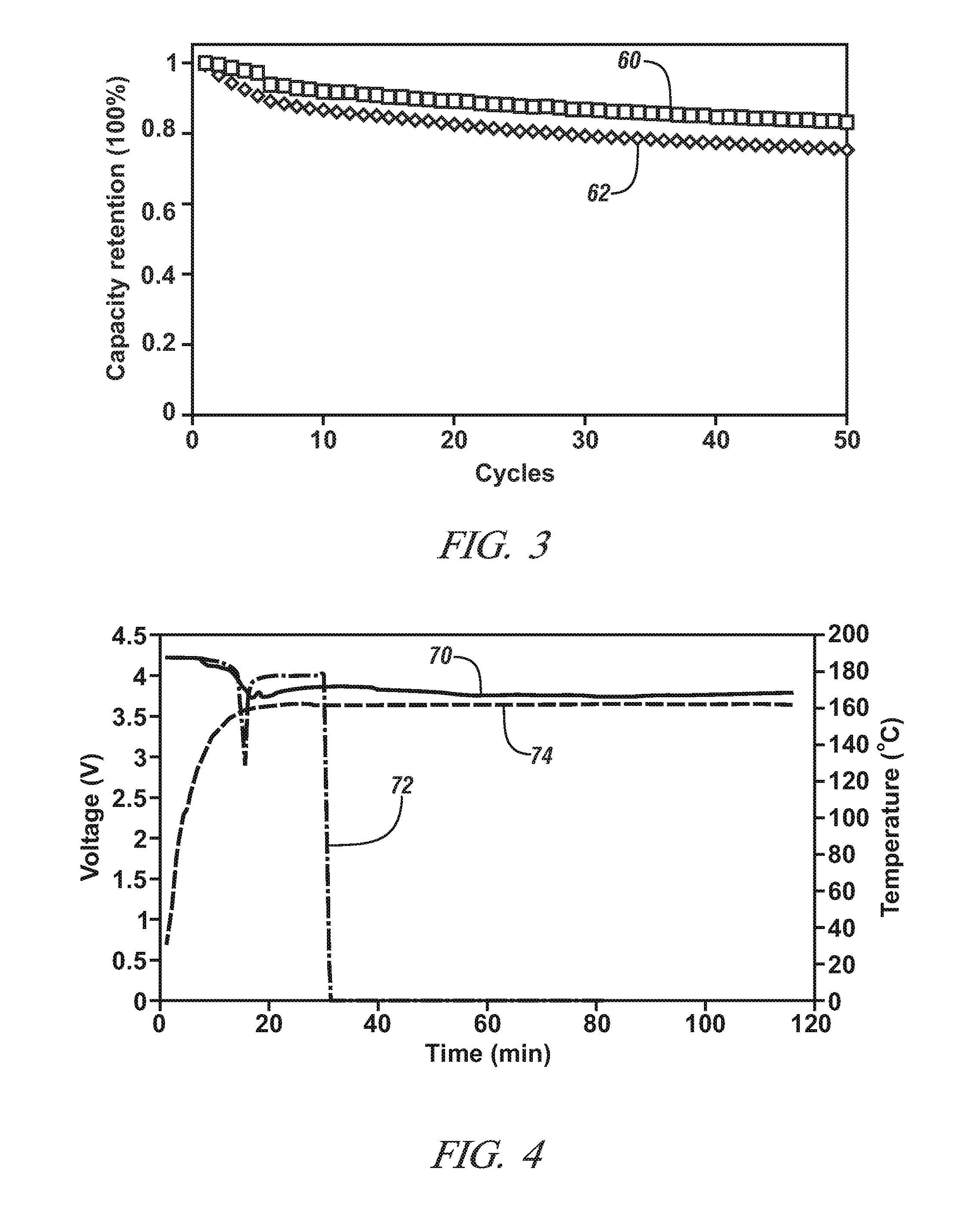Separators for a lithium ion battery
- Summary
- Abstract
- Description
- Claims
- Application Information
AI Technical Summary
Benefits of technology
Problems solved by technology
Method used
Image
Examples
example
[0041]This Example demonstrates the ionic conductivity, electrochemical cell cycle performance, and thermal stability of a separator comprised predominantly of heat resistant-particles, as described above, in comparison to a conventional monolayer polypropylene lithium ion battery separator obtained from Celgard, LLC (Charlotte, N.C.). The separator comprised predominantly of the heat-resistant particles is referred to in the remainder of this Example as the “inventive separator” for brevity.
[0042]The inventive separator was formed by a phase separation process, as described above. To begin, alumina particles having a diameter of 1 μm were dispersed in dimethylforamide (DMF). The dispersion of alumina particles was then spread on a glass plate using a doctor blade. The glass plate was placed in an oven set at 80° C. and the DMF was evaporated to form a layer of the alumina particles. A polymer solution that contained 5 wt. % polyvinyldiene fluoride (PVdF) dissolved in a miscible sol...
PUM
| Property | Measurement | Unit |
|---|---|---|
| Length | aaaaa | aaaaa |
| Length | aaaaa | aaaaa |
| Length | aaaaa | aaaaa |
Abstract
Description
Claims
Application Information
 Login to View More
Login to View More - R&D
- Intellectual Property
- Life Sciences
- Materials
- Tech Scout
- Unparalleled Data Quality
- Higher Quality Content
- 60% Fewer Hallucinations
Browse by: Latest US Patents, China's latest patents, Technical Efficacy Thesaurus, Application Domain, Technology Topic, Popular Technical Reports.
© 2025 PatSnap. All rights reserved.Legal|Privacy policy|Modern Slavery Act Transparency Statement|Sitemap|About US| Contact US: help@patsnap.com



